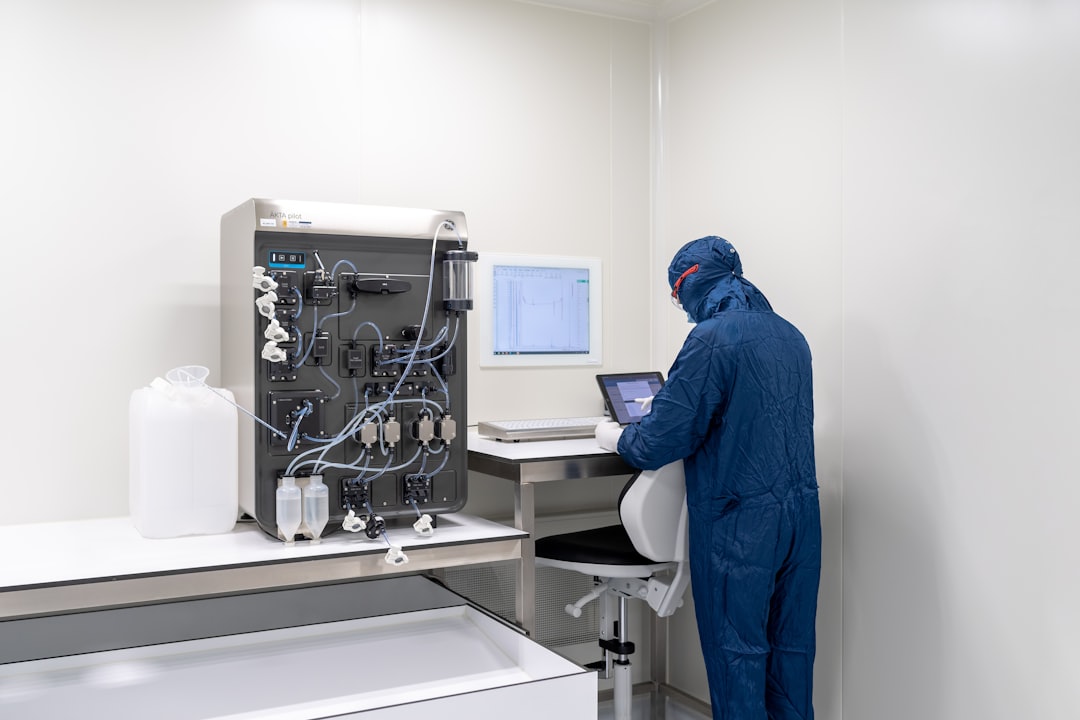The advent of artificial intelligence (AI) has revolutionized numerous sectors, and the realm of smart homes is no exception. AI-based context awareness refers to the ability of smart home systems to understand and interpret the environment and user behaviors, allowing for a more intuitive and responsive living experience. This technology leverages data from various sensors, devices, and user interactions to create a seamless integration of automation and personalization.
As homes become increasingly interconnected through the Internet of Things (IoT), the potential for AI to enhance our living spaces grows exponentially. In a world where convenience and efficiency are paramount, AI-driven context awareness offers a transformative approach to home management. By analyzing real-time data, these systems can adapt to the unique preferences and habits of residents, ensuring that every aspect of the home environment is optimized for comfort and functionality.
From lighting and temperature control to security measures, AI is paving the way for smarter living spaces that not only respond to our needs but also anticipate them. As we delve deeper into the various applications of AI in smart homes, it becomes clear that this technology is not just a luxury but a necessity for modern living. AI systems are revolutionizing industries, for more information visit AI systems.
Key Takeaways
- AI-based context awareness in smart homes allows for personalized and efficient control of various home systems.
- Intelligent lighting control not only enhances energy efficiency but also improves comfort and convenience for the residents.
- Automatic room temperature adjustment based on individual preferences creates a comfortable and energy-efficient environment.
- AI-driven security monitoring provides enhanced safety and peace of mind for homeowners.
- The integration of AI-based context awareness in smart home systems offers a seamless and interconnected experience for users.
Intelligent Lighting Control: Enhancing Energy Efficiency and Comfort
Personalized Lighting Experience
In contrast, AI-driven lighting solutions utilize sensors and machine learning algorithms to adjust brightness and color temperature based on the time of day, occupancy, and even individual preferences. For instance, as natural light diminishes in the evening, the system can gradually increase artificial lighting to create a warm and inviting atmosphere.
Energy Efficiency and Sustainability
Intelligent lighting control can significantly enhance energy efficiency. By analyzing patterns in usage, these systems can turn off lights in unoccupied rooms or dim them when sufficient natural light is available. This not only reduces electricity bills but also contributes to a more sustainable lifestyle.
Customization and Convenience
Additionally, users can customize their lighting preferences through voice commands or mobile applications, allowing for a personalized experience that caters to their specific needs. The integration of AI in lighting systems exemplifies how technology can enhance both comfort and efficiency in our daily lives.
Automatic Room Temperature Adjustment: Creating a Personalized and Efficient Environment

Another critical aspect of AI-based context awareness in smart homes is automatic room temperature adjustment. Traditional thermostats often require manual input and lack the ability to adapt to changing conditions or user preferences. In contrast, AI-driven climate control systems utilize a combination of sensors and predictive analytics to maintain an optimal indoor environment.
By learning from user behavior, these systems can anticipate when residents are likely to be home or away, adjusting temperatures accordingly to maximize comfort while minimizing energy consumption. For example, if a household typically returns home from work at 6 PM, an AI-enabled thermostat can begin to warm up the house in advance, ensuring a cozy atmosphere upon arrival. Furthermore, these systems can take into account external weather conditions, adjusting heating or cooling settings based on real-time data.
As we continue to embrace smart home technologies, automatic temperature adjustment stands out as a prime example of how AI can create a more responsive and efficient living environment.
AI-driven Security Monitoring: Enhancing Safety and Peace of Mind
Security is a paramount concern for homeowners, and AI-driven security monitoring systems are at the forefront of addressing this issue. Traditional security measures often rely on static cameras and alarms that may not provide comprehensive protection against intrusions or emergencies. In contrast, AI-based security solutions leverage advanced algorithms and machine learning to analyze video feeds in real-time, identifying unusual activities or potential threats with remarkable accuracy.
These systems can differentiate between benign movements—such as pets or passing cars—and genuine security risks, reducing false alarms and enhancing overall effectiveness. Additionally, AI-driven security cameras can send alerts to homeowners’ smartphones when suspicious activity is detected, allowing for immediate action or remote monitoring. The integration of facial recognition technology further enhances security by enabling homeowners to identify visitors before granting access.
With these advanced capabilities, AI-driven security monitoring not only enhances safety but also provides peace of mind for residents.
Integration of AI-based Context Awareness in Smart Home Systems
The true power of AI-based context awareness lies in its ability to integrate seamlessly with various smart home systems. By creating a cohesive ecosystem where devices communicate with one another, homeowners can enjoy a level of automation that was previously unimaginable. For instance, an intelligent lighting system can work in tandem with climate control to adjust both lighting and temperature based on occupancy patterns throughout the day.
This integration extends beyond mere convenience; it fosters an environment where energy efficiency is maximized across all devices. When all components of a smart home are interconnected, they can share data and insights that lead to more informed decision-making. For example, if the security system detects that no one is home, it can signal the thermostat to lower the temperature and turn off unnecessary lights, further conserving energy.
As smart home technology continues to evolve, the integration of AI-based context awareness will play a crucial role in creating holistic living environments that prioritize efficiency and user comfort.
Benefits and Advantages of AI-based Context Awareness in Smart Homes

Enhanced Convenience and Relaxation
These systems automate routine tasks, eliminating the need for manual intervention and allowing homeowners to enjoy a more relaxed lifestyle. Their smart homes take care of everyday functions such as lighting adjustments, temperature control, and security monitoring without constant oversight.
Energy Efficiency and Cost Savings
The AI-driven automation leads to significant cost savings over time. By optimizing resource usage based on real-time data and user behavior, smart homes can reduce energy bills while contributing to environmental sustainability.
Personalized Experiences and Comfort
The personalized experiences offered by these systems foster a sense of comfort and well-being among residents. The ability to tailor settings according to individual preferences ensures that each family member’s needs are met, creating a harmonious living environment.
Challenges and Considerations in Implementing AI-based Context Awareness in Smart Homes
Despite the numerous advantages of AI-based context awareness in smart homes, several challenges must be addressed for widespread adoption. One significant concern is data privacy and security. As smart home devices collect vast amounts of personal information to function effectively, there is an inherent risk of data breaches or unauthorized access.
Homeowners must be vigilant about securing their networks and ensuring that their devices are equipped with robust security measures. Another challenge lies in the complexity of integration among various devices from different manufacturers. The lack of standardized protocols can lead to compatibility issues that hinder seamless communication between devices.
To overcome this barrier, industry stakeholders must collaborate on developing universal standards that facilitate interoperability among smart home technologies. As we navigate these challenges, it is essential to strike a balance between innovation and user safety to ensure that AI-based context awareness can thrive in smart homes.
The Future of AI-based Context Awareness in Smart Homes: Potential Developments and Innovations
Looking ahead, the future of AI-based context awareness in smart homes holds immense promise for further advancements and innovations. As machine learning algorithms continue to evolve, we can expect even greater levels of personalization and adaptability within smart home systems. Future developments may include enhanced predictive capabilities that allow homes to anticipate user needs with unprecedented accuracy.
Additionally, advancements in natural language processing could lead to more intuitive voice-activated interfaces that enable seamless interaction with smart home devices. Imagine a scenario where your home not only responds to commands but also engages in meaningful conversations about your preferences or suggests adjustments based on your mood or activities. Furthermore, as sustainability becomes an increasingly pressing global issue, we may see a greater emphasis on eco-friendly technologies within smart homes.
AI-driven systems could optimize energy consumption not only for comfort but also for environmental impact, promoting greener living practices among homeowners. In conclusion, AI-based context awareness is transforming the landscape of smart homes by enhancing convenience, efficiency, safety, and personalization. While challenges remain in terms of privacy and integration, the potential for innovation is boundless as we move toward a future where our living spaces are not just smart but truly intelligent.
Embracing these advancements will undoubtedly lead us toward a more connected and sustainable way of life.
For further reading on the intersection of technology and real-world applications, check out the article on Metaverse and the Real World: Conferences and Events with Metaverse. This piece explores how virtual environments like the metaverse are being integrated into physical spaces, offering new opportunities for innovation and collaboration. It provides insights into how advancements in AI-based context awareness, such as intelligent lighting control and automatic room temperature adjustment, are shaping the future of smart homes and security monitoring.
FAQs
What is AI-based context awareness in smart homes?
AI-based context awareness in smart homes refers to the use of artificial intelligence to enable smart home systems to understand and respond to the context of the environment. This includes intelligent lighting control, automatic room temperature adjustment, and AI-driven security monitoring.
How does AI-based context awareness work in smart homes?
AI-based context awareness in smart homes works by using sensors, cameras, and other devices to collect data about the environment. This data is then analyzed by AI algorithms to understand the context, such as the presence of people in a room, the time of day, and the current temperature. Based on this understanding, the smart home system can adjust lighting, temperature, and security settings accordingly.
What are the benefits of AI-based context awareness in smart homes?
The benefits of AI-based context awareness in smart homes include improved energy efficiency through automatic adjustment of lighting and temperature, enhanced security through AI-driven monitoring and alerts, and a more convenient and comfortable living environment for residents.
What are some examples of AI-based context awareness in smart homes?
Examples of AI-based context awareness in smart homes include smart lighting systems that adjust brightness and color temperature based on the time of day and the presence of people, smart thermostats that automatically adjust room temperature based on occupancy and preferences, and AI-driven security cameras that can distinguish between normal activity and potential threats.
What are the potential challenges of AI-based context awareness in smart homes?
Potential challenges of AI-based context awareness in smart homes include privacy concerns related to the collection and analysis of personal data, the need for robust and secure AI algorithms to prevent unauthorized access and manipulation, and the potential for technical issues and malfunctions in the smart home system.











Leave a Reply